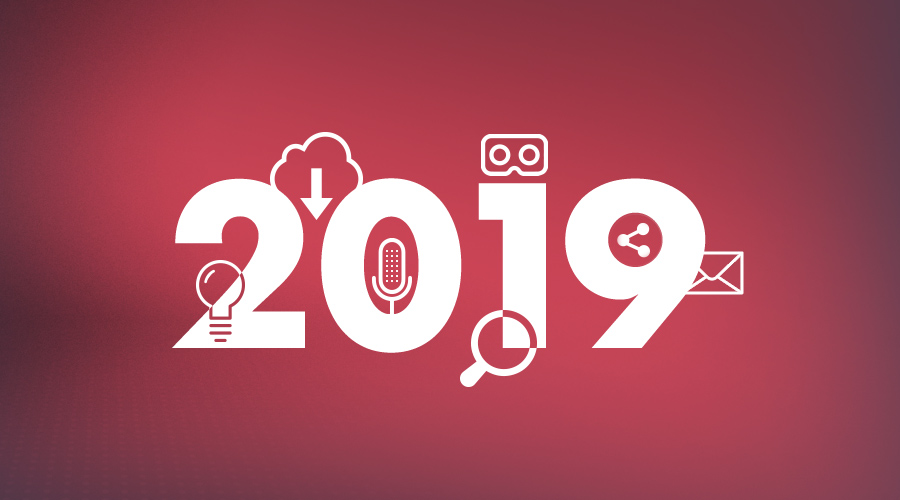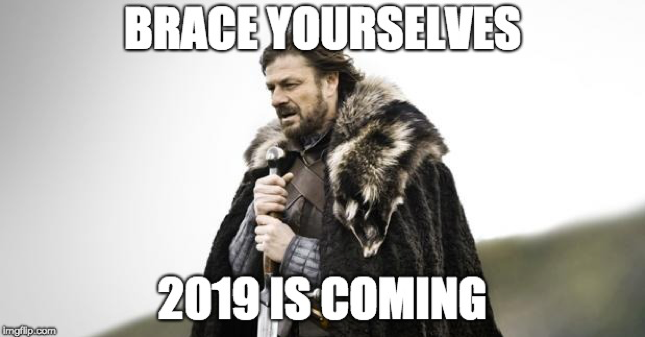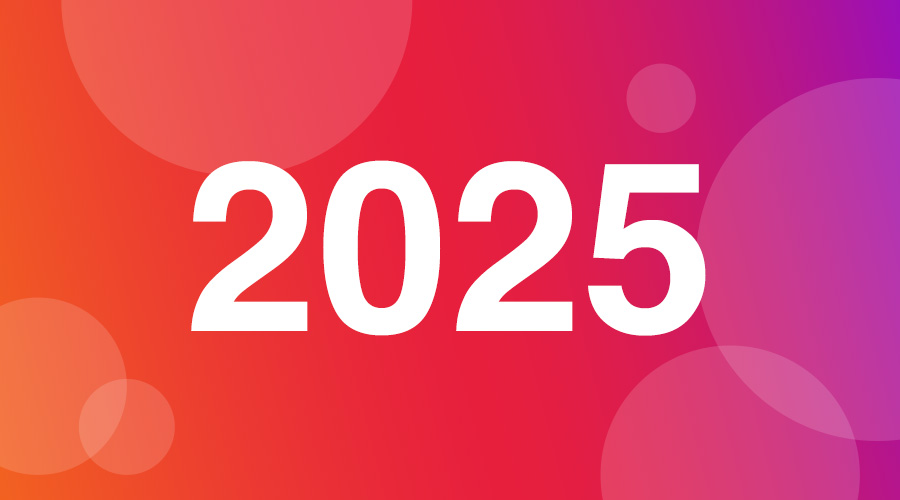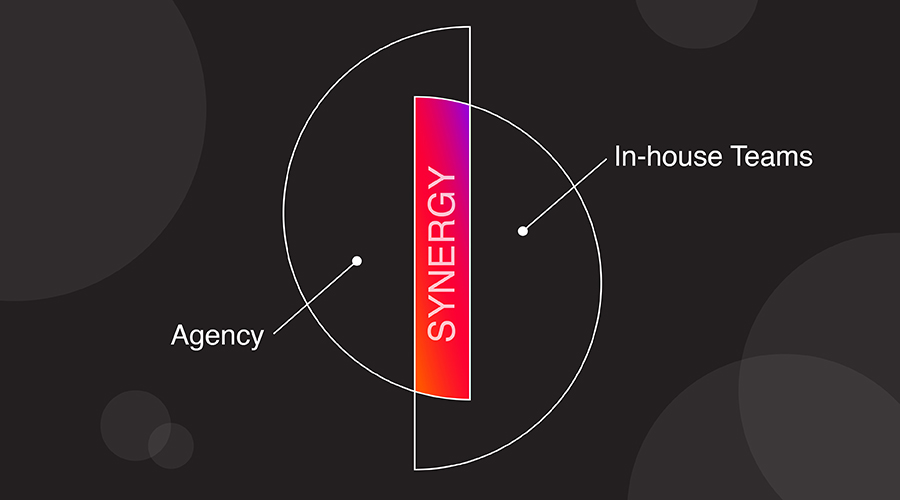Come the onset of Autumn and Q4 there are a few universal truths we’ve all come to expect.
1. The annual debate around the merit of Pumpkin Spice will fill our social feeds.
2. The Halloween and harvest decorations are already being crowded out by poinsettias and the trappings of Christmas.
3. Suddenly the calendars of the lucky are filling up with unused PTO.
4. AND THE 2019 PLANNING SEASON IS UPON US!
Amid balancing our goals and budgets with the evolving landscape of user expectation, many marketers are already looking at emerging trends for next year and beyond.
Here’s our take on where the most successful marketing leaders will be pushing their organizations in 2019:
 Trend: Brands Will See a Renewed Investment in Capturing Organic Search
Trend: Brands Will See a Renewed Investment in Capturing Organic Search
Traditional SEO: While economic forecasts for the United States in 2019 predicts continued growth, we expect to see an upward trend in companies investing in traditional SEO tactics to boost their investment in content marketing.
While paid media certainly has its place in 2019, capitalizing on organic search opportunities is one of the most lucrative ways for companies to capture users while they are explicitly or implicitly stating their consideration or purchase intent.
While the majority of product searches continue to start on Amazon, to the tune of 52 percent, Google continues to see massive surges in “where to buy” mobile searches, which is particularly powerful for B2B brands whose products are not available in online marketplaces like Amazon.
Voice Search: With the adoption of smart speakers on the rise, savvy marketers are keeping a close eye on voice search and have already begun performing their own tests.
Check out Talk More, Type Less to see how people use voice search.
According to a study by Toluna, 55.5 percent of consumers who own a smart speaker user their device to search for products with their voice and 44.2 percent use it to complete the purchase.
While marketers are focused on generating content to capture voice searches, they also need to be partnering with their sales and development teams to ensure a seamless journey. The hand-off point needs to display one smooth process, whether it’s an online purchase, initiating a call to a distributor or directions to the nearest location with the product in stock.
Visual Search: Visual search technology has come a long way in just the past few years. From reverse image look-up, to facial recognition, to Google Lens—we’ve seen massive growth followed by slow adoption. That isn’t to say adoption isn’t coming, especially as younger Millennials and Gen Z get more engaged with the technology.
While you won’t likely be deploying a Visual Search strategy in 2019, it’s a good area of potential growth to keep an eye on!
Trend: Users Will Demand More Immersive Storytelling
As more and more buying power lands predominantly in the hands of a younger crowd of professionals who desire experiences over products, marketers are having to adjust their approach to product marketing. Users no longer want to be told a story; they desire to participate in stories.
Augmented Reality (AR) and Virtual Reality (VR): The cost of AR and VR continues to become more affordable for brands and consumers alike, so it’s no wonder that adoption is soaring. As of Q2 of 2018, there are more than 150 million users of virtual reality – and that number is only projected to grow. According to Zion Market Research, the virtual reality market is expected to reach $26.8 billion in the next 4 years.
We’ve said it before, and we’ll say it again: VR is Here to Stay
Whether you’re ready to take your virtual product tours and transcreate them in AR, or looking to leverage existing technologies to make your videos available in 3D or 360, or simply record users interacting with your brand through existing VR products—the opportunities are endless to engage users in a more meaningful way in 2019.
See how other brands are using VR.
Mixed Reality: If the global phenomenon that is Escape Rooms has, well, escaped you—fear not! You are still likely familiar with some form of mixed reality experience such as Theme Parks. Or the fact that, despite being able to stream everything ever made into our living rooms, we still gather in mass to watch movies in a room full of strangers at the theater.
Immersive spaces and experiences maybe not be new, but new innovative ways to engage consumers are catching on because they allow us to explore the full range of human experiences in ways we can’t in ordinary everyday social interactions.
This is driving marketers to adopt the title of storyteller and create experiences within stores, tradeshows, pop-up events and other locations to engage at a deeper level than ever before. We can no longer just tell customers the benefits and features of their products, but instead we must give them agency to interact directly with the narrative.
This can be as complex as immersive, fabricated interactions like Escape Rooms or as simple as compelling photo ops. Either way the brands that will stand out in 2019 are planning now how they can integrate more mixed reality into their product marketing.
User-Centric Online Interactions: Believe it or not, there are still infuriating online experiences (I’m looking at you Best Buy Order for Pick-Up*!) Users are increasingly more likely to write off your brand entirely after one bad online experience, and why wouldn’t they? With so many options, consumers can afford to be fickle!
You may have the best product, the greatest sales team and wonderful caring employees, but if your online experience is a barrier for users to engage with any of those things—you might as well be selling your product out of the back of a sketchy van, because users won’t do business with you.
If you’re thinking, “yikes our online experience is a nightmare, we’re doomed.” There’s still hope. There are opportunities to utilize your existing platforms and channels, as well as opportunities for additional investment to improve your online user experience.
Analyze your online analytics data. Is there a common point in the process where users are abandoning your site? That’s a good indication that something needs to be improved.
Ask your customers for feedback. Whether you run user testing or ask your existing online customers to fill out a survey, you can collect information on pain-points and identify areas of improvement. And then, listen to those users!
Where Does Good UX Come From? (Hint, its user centric)
*Because I’m an advocate of giving everyone an opportunity to be better, I did reach out to Best Buy’s customer experience team to report the impossibility of completing an Order for Pick-Up on a mobile device and have been assured it is being fixed.
If you have any upcoming electronics needs and prefer to conduct your shopping on your phone prior to going to the store as a means of efficiency or avoiding human interaction—you’re welcome!
Trend: Brands That Leverage a Mix of Both Traditional and Non-traditional Content Marketing Formats Will Win
Video: If we put aside the inherent SEO benefits of video and ignore the fact that not only does Google give priority to video content but YouTube is also the second largest search engine—video is still a no brainer as an integral part of your content marketing strategy.
Not only is video one of the most compelling ways to deliver narratives to our customers, it’s also quickly becoming the preferred content format. According to a recent Cisco study, within the next three years, 82 percent of consumer internet traffic will be video!
Digital video is the new window shopping and can even serve the role of sales representative. According to data collected by Google, 80 percent of shoppers who watched a YouTube video related to a product they were evaluating for purchase said they watched the video at the beginning of their online buying journey.
This is why it’s so important for marketers to know How To Align Video With Your Brand.
User Generated Content: Now more than ever, users look to their peers, families, friends and extended online network for validation—which gives our consumers massive weight as influencers to our target markets.
For years, marketers have known about the power of creating brand advocates, delivering experiences that make our customers want to give us personal referrals and building our networks—but where so many brands fall short is integrating that user generated content within their marketing strategies.
One of the most obvious forms of user generated content is social media, but don’t neglect product reviews and ratings, videos, blogs and photos.
If you aren’t making it easy for your prospects to engage with their peers’ opinions of your products or services in your own channels, you’re losing them.
Not sure where to begin? Two great places to start would be:
1. Deploying a Social Listening project to see what content is already out there that you could be leveraging.
2. Work with your technical teams to make it easier for customers to leave reviews within your website or other primary content channels.
Social Media: The social media marathon shows no signs of slowing down as platforms continue to evolve to meet user demands.
In 2019, we expected to see brands increasing their connections to social platforms through the use of social sign-on and growing third party application integrations.
We also anticipate increasing options for Live Video and continued adoption by large and small brands alike, as well as greater investment into Social Listening as a core part of Social Media research and content planning efforts.
Not ready to be jumping into cross-platform data integrations or Social Listening? No worries, brush up on your Social Media Basics.
Trend: Machine Learning and Artificial Intelligence Will Continue to be Big Players in Improving The Customer Journey
Personalization: Machine learning and artificial intelligence have driven increasingly more efficient data analysis, making it easier for marketers to deliver hyper-personalization to their customers, including content personalization and unique journeys.
Today’s consumers expect companies to know their preferences on a very intimate level, especially when they have explicitly provided their data. According to Selligent research, 74 percent of global consumers expect brands to “treat me as an individual, not as a member of some segment.”
Automation: Many organizations are already leveraging some degree of Marketing Automation, but the playing field for who can get the most out of marketing automation campaigns is becoming more and more even as artificial intelligence and machine learning transform the capabilities of these already powerful platforms.
In 2019, we anticipate seeing more marketers set-up predictive lead scoring, deploy complex trigger-based campaigns and invest in greater depths of dynamic content to serve customers at every phase of the user journey.
This won’t be the culling song of your classic newsletter but is another evolution in automation to help brands deliver richer, higher-converting experiences.
Check out What is Marketing Automation, Again? to learn more about tactics beyond just email marketing.
Bonus Trend: Smarter Partnerships
Every organization has unique goals and needs, which comes with different expectations from their partners. In 2019, we expect to see more organizations re-evaluating their partnerships to ensure they have the right teams on the right work delivering measurable ROI.
For some organizations, that means a full-service agency that can support their needs across a variety of disciplines include setting marketing strategy, developing and activating every facet of a campaign, measuring performance and making optimizations.
For others it, it’s asking your partners to hone-in on one or two disciplines they excel at that your internal teams may not be able to deliver on or calling on your partners to execute something timely that your teams just don’t have the capacity to take on.
Over the course of the year, it could be asking your partners to flex across working models as needed. All of those approaches are okay.
Even though there are still plenty of holidays left this year, don’t be afraid to start having planning conversations with your agency partners. It’s not too early to identify where you may need deeper-level support and engagement in 2019, where you’re going to need your partner to help push your organization towards more creative approaches and emerging trends, or where you just need them to jump in and get stuff done.
—
Editor’s Note: Author and Lead Digital Strategist, Gena, is not a Futurist—but she does read a lot and isn’t that half the battle?









